Aug 17, 2023 8:00:00 AM
How do strongly basic analytes and SPE EVOLUTE®WCX work?
By Amber Cain

We know that compounds can be acidic, basic and neutral. Looking at pKas and functional groups can help us understand the best approach for SPE selection and workflow. Let’s take a look at the compound, desmopressin.
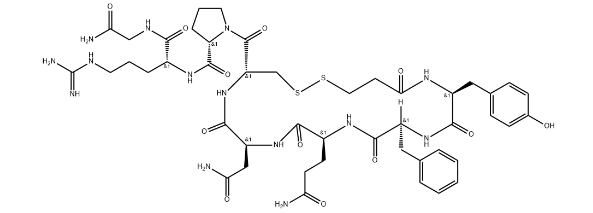
Figure 1. Structure of desmopressin
When we look at the structure we can see the conjugation through the benzene ring. This conjugation will increase our hydrophobic bonding. Now let’s look at the pKa’s of the functional groups.
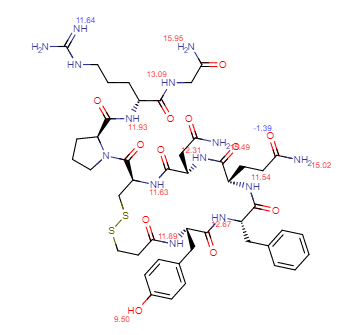 Figure 2. Desmopressin pKas per Chemicalize.
Figure 2. Desmopressin pKas per Chemicalize.
In Figure 2 we can see that per Chemicalize our most acidic functional group has a pKa of 9.5 and our strongest basic pKa is 11.64. Remembering some fundamentals of general chemistry, we know strong acids and strong bases are ionized over pretty much the entire usable pH range. Well, the opposite is true for weak acids and weak bases. Ionization for weak acids and bases can be controlled (effectively turned on or off) by manipulation of pH. So what constitutes strong vs weak? Let’s take a look at the sorbent chemistry selection guide in the EVOLUTE® Express User Guide.
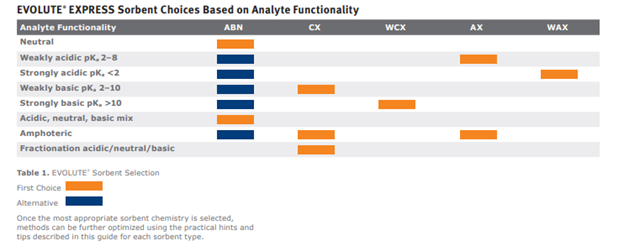
Figure 3. Looking at the analyte functionality column we can see the pKa ranges for each categorization, we will use this to help us determine the best sorbent chemistry for analysis.
The pKas for the acidic functional groups fall past the weakly acidic analyte functionality at 9.50 and beyond. Looking at the strongest basic functional group pKa at 11.64, this falls within the “strongly basic” category. Since our strongly basic functional group on the analyte will remain positively charged over entire pH range, we will exploit that ion exchange potential by using the EVOLUTE WCX, as we can manipulate the negative charge on the sorbent. Figure 3 shows us the ionization state of the WCX media at low and high pH. For a quick refresher on pH adjustment refer to the pH adjustment sample prep blog.
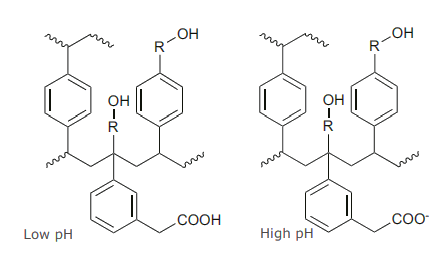 Figure 4. EVOLUTE WCX sorbent ionization state at low pH (no charge) and high pH (negatively charged), notice the modified polysystrenedivinylbenzene polymer backbone which allows the sorbent to be water-wettable.
Figure 4. EVOLUTE WCX sorbent ionization state at low pH (no charge) and high pH (negatively charged), notice the modified polysystrenedivinylbenzene polymer backbone which allows the sorbent to be water-wettable.
The EVOLUTE WCX sorbent has non-polar (hydrophobic) and weak cation exchange functionality. The modified carboxylic acid group allows us to control the sorbent ionization thereby controlling analyte retention and elution of strong bases which can’t be fully neutralized. We can see in Figure 4 the hydrophobic interactions. The sorbent acidic functional group has a pKa of 5 which tells us it is going to be 100% ionized over the high end of the pH range, but neutral at pH <3. We can also see the conjugation portion of the structure that will allow for hydrophobic interactions.
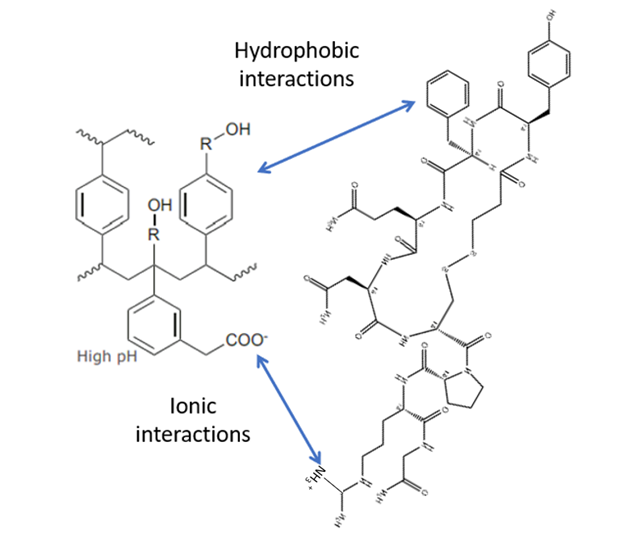
Figure 5. Hydrophobic and Ionic interactions are simultaneously occurring between the WCX sorbent and the desmopressin molecule.
Now let’s see how each step occurs in the WCX as seen in AN887.
In this example we are working with human serum and will use the EVOLUTE®Express WCX 30 mg 96- well plate part number: 602-0030-PX01.
| Step | Description | What’s happening? |
| Sample Pre-treatment | 200 µL 10 mM ammonium acetate pH 6 |
Diluting the sample will help decrease viscosity allowing it to more readily flow through the SPE sorbent. The addition of ammonium acetate will allow the sorbent to be fully ionized during sample loading. Remember strong bases can’t be completely neutralized so we are going to ionize and neutralize our sorbent to control analyte retention and release. |
| Condition (optional) | 1 mL methanol | This is optional when using the EVOLUTE Express line due to the water-wettable functional groups and frits. |
| Positive Pressure | Recommend positive pressure. |
Positive pressure avoids variable well-to-well flow-through. Nitrogen is typically preferred to prevent oxidation and purity prevents contamination. |
| Equilibration (optional) | 1 mL 10 mM ammonium acetate pH 6 |
This is optional when using the EVOLUTE Express line due to the water-wettable functional groups and frits. Pretreating with ammonium acetate will help verify the sorbent is fully ionized when a sample is loaded. |
| Positive Pressure | Recommend positive pressure. |
Positive pressure avoids variable well-to-well flow-through. Nitrogen is typically preferred to prevent oxidation and purity prevents contamination. |
| Sample Loading | 400 µL pretreated sample | This is within the recommended load capacity. |
| Positive Pressure | Recommend positive pressure. |
Positive pressure avoids variable well-to-well flow-through. Nitrogen is typically preferred to prevent oxidation and purity prevents contamination. |
|
Wash 1 |
1 mL 10 mM ammonium acetate pH 6 |
Maintains maximum ionization of acidic functional groups in the sorbent. Remove polar interferences such as salts and small proteins. |
| Positive Pressure | Recommend positive pressure. |
Positive pressure avoids variable well-to-well flow-through. Nitrogen is typically preferred to prevent oxidation and purity prevents contamination. |
| Wash 2 | 1 mL methanol |
Removes hydrophobic interactions, simultaneously releasing hydrophobic compounds such as phospholipids and lysophospholipids. The only remaining interaction is ionic between the analyte and the sorbent. |
| Positive Pressure | Recommend positive pressure. |
Positive pressure avoids variable well-to-well flow-through. Nitrogen is typically preferred to prevent oxidation and purity prevents contamination. |
| Elution | 200 µL 2% formic acid in 70/30 (v/v) methanol/ water |
Adding the acidic buffer will neutralize the sorbent removing the ionic interactions thereby releasing the analytes from the sorbent. The organic solvents will break any remaining hydrophobic interactions with the analyte. |
| Positive Pressure | Recommend positive pressure. |
Positive pressure avoids variable well-to-well flow-through. Nitrogen is typically preferred to prevent oxidation and purity prevents contamination. |
| Dry Down | Stream of air or nitrogen | Nitrogen is typically preferred to prevent oxidation and purity prevents contamination. |
| Reconstitution | 200 µL 0.1% formic acid in water/methanol (50/50, v/v) | Mass spectrometry suitable solvent. |
The typical process for WCX sample preparation is based on both reverse phase/ hydrophobic interactions and ion-exchange abilities of your analytes of interest. In figure 4 we mentioned the added benefit of the polymeric sorbent. Why is this important? In traditional silica based SPE, you had to condition and equilibrate your sorbent and frits, which were hydrophobic. With this polymeric SPE product, both the sorbent and frits are water wettable and with an aqueous sample, the sorbent is able to interact with your sample without conditioning and equilibration. This also has the benefit of removing the variability of wells drying out during your analysis. This is especially beneficial if you are working with a 96-well plate and well A1 might be solvated several minutes before H12; the water-wettable capability of the EVOLUTE Express line minimizes the risk of wells drying and well-to-well variability in your application results.
Published: Aug 17, 2023 8:00:00 AM


